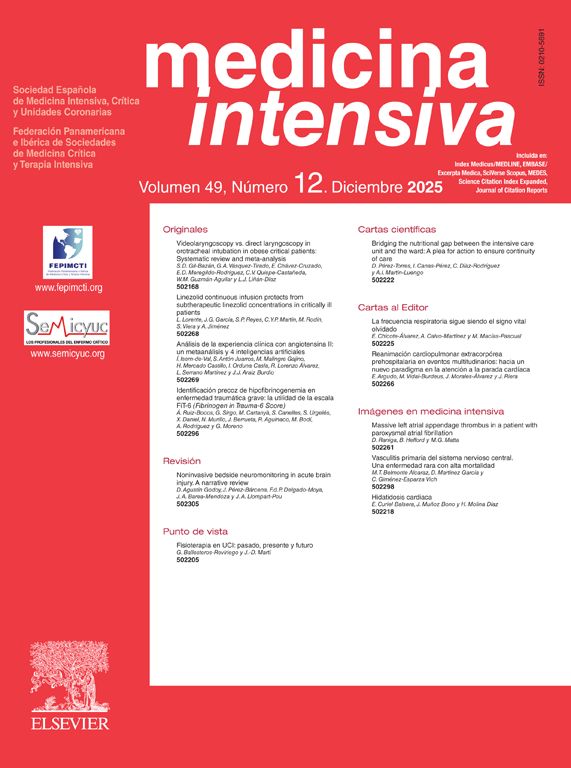We report the case of a 49-year-old woman with a past medical history of asthma and type 2 diabetes who was admitted to the intensive care unit with diabetic ketoacidosis and bilateral pneumonia due to Klebsiella pneumoniae and required invasive mechanical ventilation. The patient exhibited good initial respiratory progress. However, after 8 days of mechanical ventilation, she developed a spontaneous left pneumothorax, which was drained and the chest drain kept in place. Twenty-four hours later, extubation was attempted, but reintubation was deemed necessary due to weakness and poor secretion management. Following reintubation, the patient exhibited hypotension and acute respiratory failure. A new left pneumothorax was seen, leading to the placement of yet another drainage tube. The thoracic x-ray performed (Fig. 1) revealed the presence of a re-expanded left lung, and a hypodense lesion in the right base and significant subcutaneous emphysema. The CAT scan performed (Fig. 2) with bilateral consolidation confirmed the presence of multiple cavitations consistent with necrotizing pneumonia.
El factor de impacto mide la media del número de citaciones recibidas en un año por trabajos publicados en la publicación durante los dos años anteriores.
© Clarivate Analytics, Journal Citation Reports 2025
SJR es una prestigiosa métrica basada en la idea de que todas las citaciones no son iguales. SJR usa un algoritmo similar al page rank de Google; es una medida cuantitativa y cualitativa al impacto de una publicación.
Ver másSNIP permite comparar el impacto de revistas de diferentes campos temáticos, corrigiendo las diferencias en la probabilidad de ser citado que existe entre revistas de distintas materias.
Ver más







